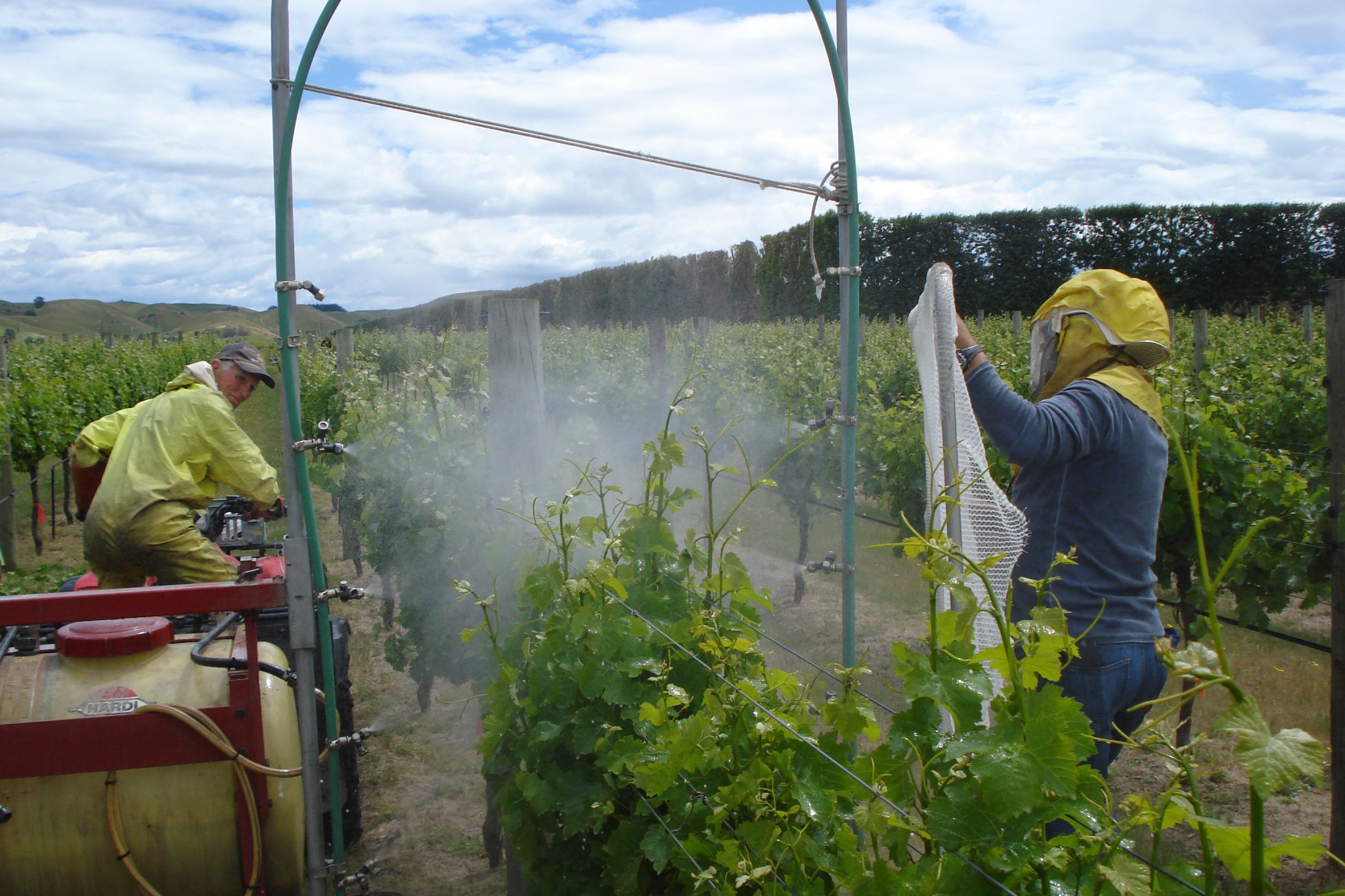
Antitranspirant is sprayed on Sauvignon Blanc vines at veraison
EIT researchers have found spraying grapevines to reduce transpiration can enhance the quality of low alcohol wine produced from early harvested grapes.
The results are significant for the production of ‘lifestyle wine’ – a sector the New Zealand industry is keen to develop as consumers increasingly factor social responsibility, health and wellness into their wine purchasing decisions.
A School of Viticulture and Wine Science team led by research scientist and senior viticulture lecturer Dr Petra King undertook the research project over the 2014/15 season, investigating the effects on the quality of low alcohol wine made from early harvested grapes treated with antitranspirant (AT) spray at veraison.
The study attracted funding from Key Industries, which manufactures a compound used to preserve plants and prevent them drying out too quickly.
The antitranspirant acts to temporarily reduce the stomatal opening, increasing leaf resistance to water vapour diffusion affecting the plant’s uptake of carbon dioxide and slowing photosynthesis.
The research focused on two Sauvignon Blanc sites in the Bridge Pa Triangle, Te Mata Estate’s Isosceles vineyard and a Ngatarawa Wines vineyard.
Petra says the results suggest a major effect of applying the AT spray at veraison was in reducing sugar accumulation by the grapes, which were harvested at 18 Brix some 8-10 days before optimum ripeness and made into a 10 percent alcohol wine.
In finding the AT influenced wine quality, an EIT sensory analysis panel noted a lower level of green characters and enhanced tropical fruit and floral aromas.
Petra says more research is needed to investigate seasonal influences and the effect of AT on other cultivars.
Aiming to develop lower alcohol wines as a significant component of New Zealand exports, New Zealand Winegrowers launched a $17-million, seven-year project to investigate the wine style in March 2014.
